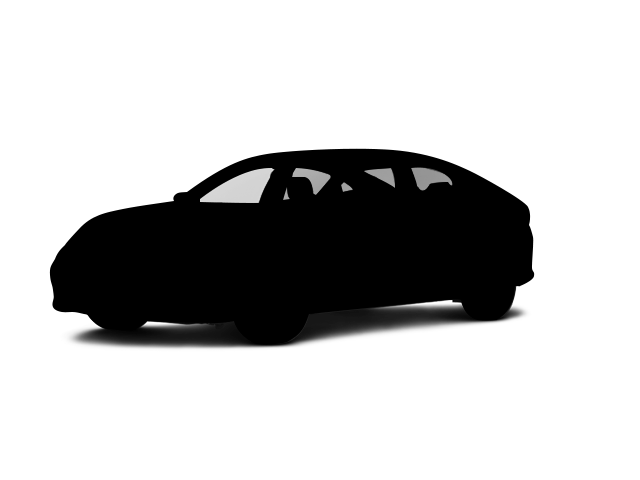The X5’s pre-crash front seatbelts will tighten automatically in the event the vehicle detects an impending crash, improving protection against injury significantly. The RX doesn’t offer pre-crash pretensioners.
The X5 has standard Active Head Restraints, which use a specially designed headrest to protect the driver and front passenger from whiplash. During a rear-end collision, the Active Head Restraints system moves the headrests forward to prevent neck and spine injuries. The RX doesn’t offer a whiplash protection system.
In a Vehicle-to-Vehicle Frontal Crash Prevention 2.0 test conducted by the Insurance Institute for Highway Safety (IIHS), the BMW X5 achieved a “Good” rating - the highest possible - for its performance in forward collision warning and automatic braking systems, demonstrating its excellent capabilities in preventing collisions. The Lexus RX has not been tested.
When descending a steep, off-road slope, the X5’s standard Hill Descent Control allows you to creep down safely. The RX doesn’t offer Hill Descent Control.
Both the X5 and the RX have standard driver and passenger frontal airbags, front and rear side-impact airbags, driver and front passenger knee airbags, side-impact head airbags, front seatbelt pretensioners, four-wheel antilock brakes, traction control, electronic stability systems to prevent skidding, crash mitigating brakes, post-collision automatic braking systems, daytime running lights, lane departure warning systems, blind spot warning systems, rearview cameras, rear cross-path warning, driver alert monitors, available all wheel drive and around view monitors.
The National Highway Traffic Safety Administration does 35 MPH front crash tests on new vehicles. In this test, results indicate that the BMW X5 is safer than the Lexus RX:
|
|
X5 |
RX |
|
|
Passenger |
|
| STARS |
4 Stars |
4 Stars |
| HIC |
342 |
472 |
| Neck Compression |
91 lbs. |
114 lbs. |
New test not comparable to pre-2011 test results. More stars = Better. Lower test results = Better.
The Insurance Institute for Highway Safety does 40 MPH moderate front offset crash tests on new cars. In this updated test, results indicate that the X5 is much safer than the RX:
|
|
X5 |
RX |
| Overall Evaluation |
GOOD |
POOR |
| Structure |
GOOD |
GOOD |
|
|
Driver Injury Measures |
|
| Head/Neck Rating |
GOOD |
GOOD |
| Chest Rating |
GOOD |
GOOD |
| Thigh/hip Rating |
GOOD |
GOOD |
| Leg/foot Rating |
GOOD |
GOOD |
| Restraints |
GOOD |
GOOD |
|
|
Rear Passenger Injury Measures |
|
| Head/Neck Rating |
GOOD |
GOOD |
| Chest Rating |
GOOD |
POOR |
| Thigh Rating |
GOOD |
GOOD |
| Restraints |
ACCEPTABLE |
POOR |
The National Highway Traffic Safety Administration does side impact tests on new vehicles. In this test, which crashes the vehicle into a flat barrier at 38.5 MPH and into a post at 20 MPH, results indicate that the BMW X5 is safer than the Lexus RX:
|
|
X5 |
RX |
|
|
Rear Seat |
|
| STARS |
5 Stars |
5 Stars |
| HIC |
48 |
63 |
| Spine Acceleration |
30 G’s |
43 G’s |
| Hip Force |
584 lbs. |
640 lbs. |
|
|
Into Pole |
|
| STARS |
5 Stars |
5 Stars |
| Max Damage Depth |
14 inches |
15 inches |
| HIC |
308 |
317 |
| Spine Acceleration |
44 G’s |
47 G’s |
| Hip Force |
796 lbs. |
919 lbs. |
New test not comparable to pre-2011 test results. More stars = Better. Lower test results = Better.
The BMW X5 has achieved the Insurance Institute for Highway Safety’s (IIHS) highest rating of “Top Safety Pick Plus” for the 2025 model year. This distinction is based on its exceptional performance in IIHS’ rigorous battery of safety tests. Specifically, it earned a “Good” rating in the latest, more stringent moderate overlap front crash test, a “Good” result in the updated side impact test, and a “Good” score in the revised pedestrian crash prevention test. The RX is not even a standard “Top Safety Pick” for 2025.

